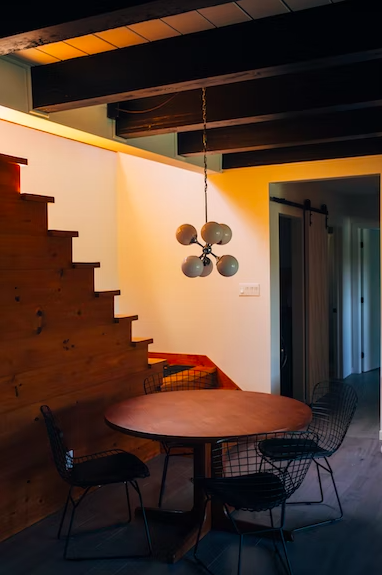Basements are essential elements of a home. Originally, they served as storage facilities for items like coal, timber or hundreds of jars and trunks.
Nowadays, homeowners often opt to expand their living area by converting basements into fully functional rooms. Furthermore, adding more ceiling height is often requested by customers as a way of increasing the ambiance in their basement.
MAGCOR Underpinning
If you’re thinking about extending the height of your basement, there are a few options to consider. Underpinning is one such solution and can provide extra space and a new ceiling without reducing its square footage.
Benching is another cost-effective solution that doesn’t necessitate digging beneath the foundation. This type of solution works best for homes with weak foundations or those situated in poor soil conditions.
No matter the choice you make – underpinning or benching – you need a company with the appropriate tools and experience to get the job done correctly. Furthermore, make sure they can create drawings and plans as well as secure necessary permits.
Underpinning is an efficient way to add height to your basement and repair damaged foundations. This process strengthens your home’s structure by lowering its footing and redistributing weight on healthier soil.
Additionally, this method helps minimize the chance of future settlement issues that could cause cracks and leaks in your house. As a result, this method can significantly boost your home’s resale value.
Underpinning can also bring more natural light into your basement, improving its ambience and making it more enjoyable for you and your family to spend time there.
Underpinning is another way to boost the value of your basement by creating living space and a higher ceiling, which could attract potential buyers.
Underpinning is often chosen by homeowners for its stability and aesthetic benefits, but this method can also be costly. It may be particularly pricey for larger homes with large basements or in cheaper housing markets.
The cost of underpinning is determined by several factors, including your budget and how badly damaged your foundation is. It may also depend on soil condition and nearby houses’ foundations.
Benching is a cost-effective alternative to underpinning, and it can be completed quickly. However, benching tends to reduce your basement’s square footage without adding as much extra room. Benching may be suitable for homes with limited funds but cannot compare in terms of added space compared to underpinning.
If you want to increase the height of your basement, either underpinning or benching are recommended. Both methods offer numerous advantages but may prove costly if not done correctly.
Selecting the ideal basement lowering technique for your home depends on a number of factors, including individual needs and budget. If you’re uncertain which option is best suited to your residence, reach out to us and we’d be more than happy to discuss all available options with you. MAGCOR Underpinning is an experienced and reliable underpinning specialist with the expertise to help you make an informed decision.

Benching
When renovating your basement or looking to add height to your home, it’s essential that you understand all available options. Take into account what type of work needs to be done, the amount of extra living space required and your budget before determining which method is most suitable for you.
One popular way to increase the height of your basement is through “underpinning,” a process which involves excavating soil beneath the foundation of your house. Not only does this reduce square footage inside, but it also strengthens its foundation.
Underpinning is a time-consuming, costly and delicate job that necessitates precision. That is why it is recommended that you hire professionals for this task.
Benching is another option that doesn’t necessitate excavating beneath your house’s foundation. Instead, a thick ledge is created around the sides of your basement walls to support its weight and keep everything level.
Although this option is more budget friendly than underpinning, it does reduce your basement’s working space and may affect its aesthetic appeal. However, you can incorporate this ledge into your furnishings and decor for optimal use of this valuable ledge.
Benching can be an effective solution if your basement has a low foundation. However, this technique may not be ideal if the soil in your neighbourhood is unstable and you live near a neighbor. Furthermore, take into account what type of sewage system your home uses as well as where in relation to another property’s property that neighbors yours.
Before beginning basement lowering with underpinning or benching, you must obtain your neighbor’s consent. During this process, soil beneath their foundation may be affected and so it’s best to consult them first about whether this is something they would accept.
Benching can not only lower the foundation of your basement, but it can also raise it by up to five feet. This is an ideal option if you plan on turning your space into a family room, office, bedroom or even an apartment.
When planning the construction of a basement, it is essential to take into account the size of your family and how many people will occupy the new space. Therefore, selecting an appropriate lowering technique for your situation is vital.
Renovating your basement can be an expensive project, so it’s essential to select a technique which will save you money in the long run. Fortunately, there are numerous cost-effective and effective methods available for adding height to your cellar.

Underpinning Cost
Underpinning is an economical way to add height to your basement without increasing square footage in your home. Furthermore, it helps reduce energy consumption and minimize your building’s carbon footprint.
Saving on property insurance can also help you save money. Furthermore, it provides your house with a stronger base so it can withstand severe weather conditions and earthquakes.
This process entails digging a series of holes below your foundation footing and filling them sequentially to strengthen and lower the foundations, while still leaving your walls structurally sound. As this task can take a lot of time, it is essential to select an experienced service that works within budget.
Your contractor should provide an up-front quote and a fixed schedule that outlines all project phases. Doing this will help you avoid unexpected costs and ensure you don’t overspend on the venture.
Underpinning costs vary based on the soil beneath your house, the accessibility to foundations and which underpinning method you select. For instance, resin injection underpinning is typically more cost-effective than traditional underpinning solutions.
There are a number of factors that can cause the ground under your house to shift and damage its foundations, such as dry tree roots, leaky pipes, extreme heat conditions and inadequately prepared soil compaction. Other potential causes include earthquakes and outdated foundations that have not been updated with modern safety standards.
Some cases of subsidence can be remedied with simple maintenance, like fixing drains that leak or clearing away tree branches that have overtaken a property’s foundations. On the other hand, some cases require professional assistance.
A qualified structural engineer can accurately diagnose whether your issue is serious and, if so, how it can be corrected. They’ll suggest the most suitable underpinning solution for your property and provide you with a quote.
When selecting an underpinning solution for your home, it is essential to get several quotes before making a final decision. These quotes should cover everything from engineering reports and site inspections, through the work itself as well as necessary materials.
When searching for a structural engineering and contractor team to guarantee quality work, you should look for a reputable company with an experienced team that offers warranties as well as professional indemnity insurance.
Underpinning your house is not a DIY project and will require extensive skills and expertise. That is why it is critical to hire an expert service and obtain at least two quotes before making a final decision.
Underpinning a basement is an expensive and disruptive project that requires special machinery. Since this task may need to be done in stages, it’s best to hire a contractor who can manage the entire process and allow you to make reservations ahead of time.










Comments